Note: In an earlier version we mentioned that the S100SF can only use xD cards. Seems the same slot can also fit SD cards. Sorry for the confusion.
The new Fujifilm Finepix S100FS (named S100FS in the rest of the diary) is a point&shoot camera of the category ultra zoom with the extreme range of 28-400mm (135 equivalent). The camera uses a 2/3" sensor which is slightly larger than most P&S sensors but it's surface area is at least 4x smaller than most DSLR sensors.
If 28mm is wide enough for you (it would be for our own personal work) then the range of this camera is just amazing. It very much depends on what you want to do whether you find this to be too good to be true.
What we like
- Seems very well built
- Good swivel LCD
- Lens seems to be sharp
- Manual zoom ring on the lens
- Fuji always handles colors very well
- EVF is pretty good as far as EVFs go
- Lots of resolution at 11MP
- Allows AEB (Auto Exposure Bracketing) at 3fps. We would like to see larger EV spacing than +1/-1 EV though.
Major issues
- Fuji still does not compress the RAW files. One RAW file is 22MB in size (this is at least 200% than would be needed using compression).
- Slow write speed (the result of the huge file sizes). If you use AEB you have to wait more than 30 seconds till the RAW buffer clears and you can shoot again.
- CA (chromatic aberrations) can be strong. We cover this crucial point below.
Minor issues
- Automatic eye detector to switch between LCD and EVF would be welcome
- Histogram display should be improved (color channel view)
One of the most critical factors of the S100FS are clearly CA (chromatic aberrations).
CA (Chromatic Aberrations)
CA Definition: What are chromatic aberrations? Most lenses are not perfect and can sometimes focus the red, green and blue channels on different planes (relative to the sensor). This can produce green/purple fringes at higher contrast edges. The effect is stronger towards the corners than in the center. Even top rated zoom and wide-angle prime lenses can show this artifact.
This said we would never expect a 14x zoom to have low CA. This means we are not surprised at all. The good news about CA is that some RAW converters like Adobe Camera RAW can reduce it quite a bit. If you are willing to take this extra step CA gets quite manageable.
Again it is no surprise that CA shows very strong at the wide end (28mm). Here is a sample crop at 100% pixel level:
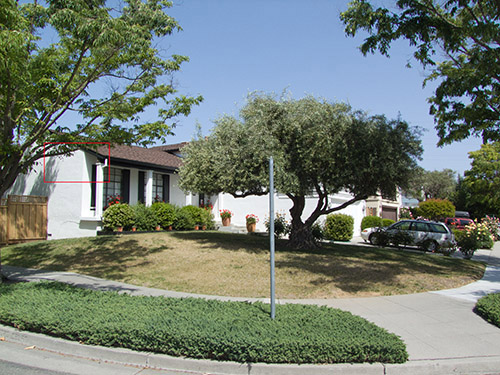
Full image with crop selection
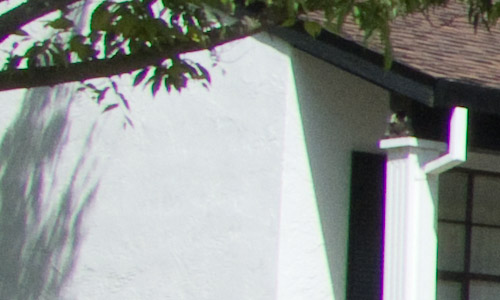
Strong CA at 28mm (100% pixels)
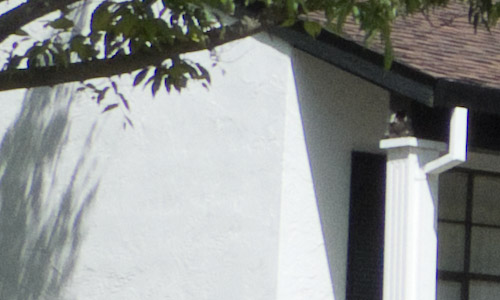
Reduced CA in LR 1.4 (we show the Lightroom 1.4 settings used)
In the end it very much depends on your workflow whether this level of CA makes you nervous or not. Because it mostly depends on the focal length you could even create presets for different focal lengths used. CA can be very much reduced using some RAW converters. We have to remove quite often CA even for DSLRs with high end zooms or wide angle primes that cost way more than this camera. Too bad that this process is not automatic today.
Los Gatos test shots
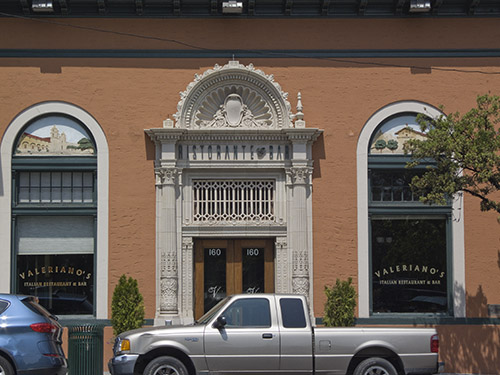
Ristorante @ISO 100
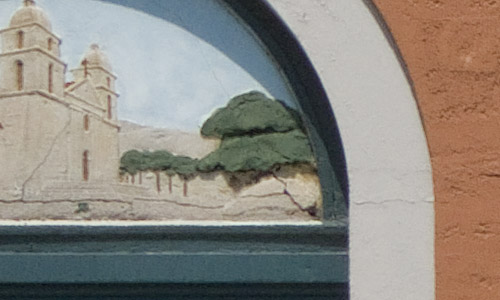
Crop @100% magnification
We always liked how Fuji handles colors. The slight graininess is normal for sensors of this size (especially at 11MP).
Extra CA info for this photo:
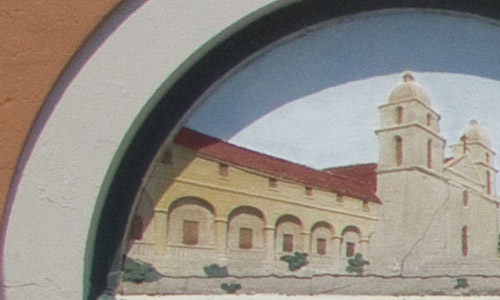
Some CA at this focal length (about 80mm in 135 terms)
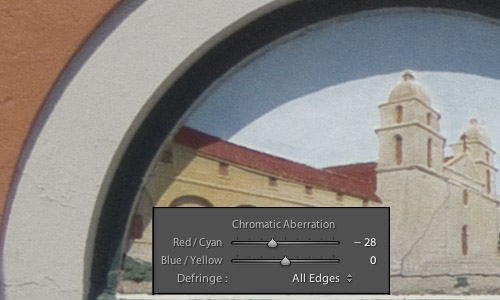
CA fixed in Lightroom
For this image CA is really not a big deal and easy to fix.
You can download the original RAW from here (about 22MB).
Note: Remember that the service we provide is financed
by selling our ebooks and PS
tools. Also direct donations are welcome.
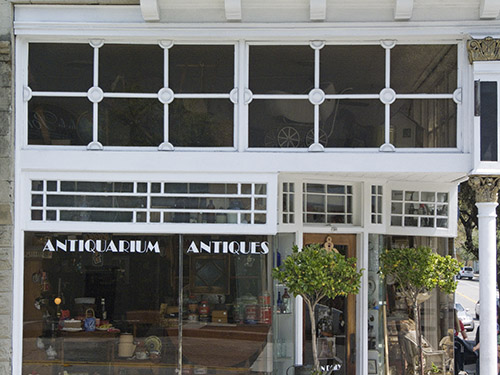
Antique store @ ISO 400
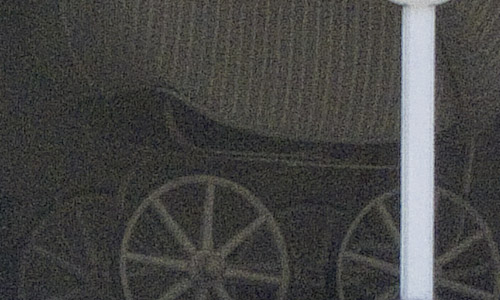
@ 100% magnification
Usable shot for ISO 400 and such a small sensor.
ISO Test
We converted with ACR 4.4 (luminance noise
removal set to zero) and then sharpened with the same level in DOP EasyD DetailResolver 1.0 .
Note: EasyD DetailResolver shows both more detail and more grain although we activated the Noise Mask option. This way we can see how much real detail is available.
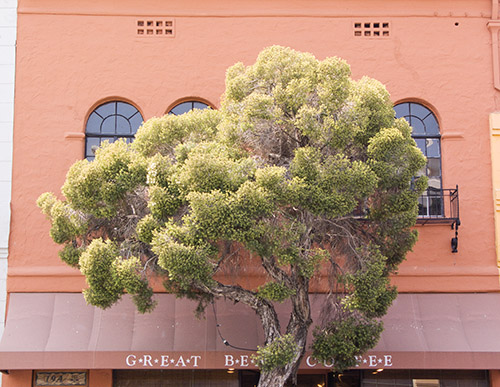
Bear Coffee Shop
Fuji S100FS |
| |
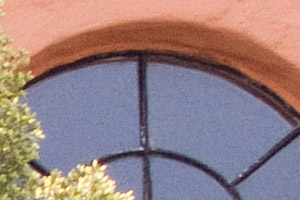
ISO
100 |
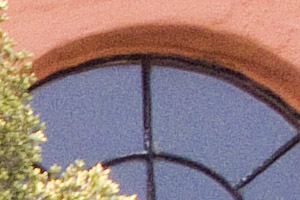
ISO
200
|
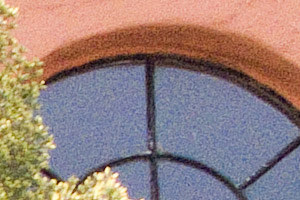
ISO 400 |
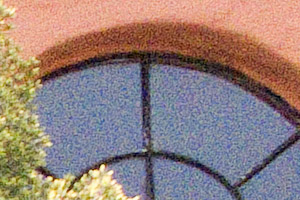
ISO 800 |
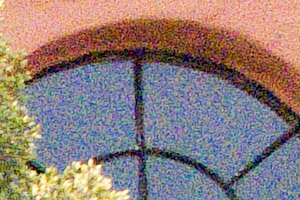
ISO 1600 |
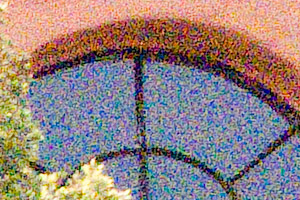
ISO 3200 |
All these shots are with luminance noise removal off in camera
(as much as the user can control this) and raw converter (color noise removal was at default). ISO 100-200 slightly grainy but no real issue.
ISO 400 is quite usable too. ISO 800 can produce nice B&W photos if you like grain. ISO 1600 and ISO 3200 is too noisy for our taste.
Overall the results are not bad at all for small sensor cameras.
Note: Because we use now also the DOP EasyD DetailResolver (with Noise Mask activated) noise is even more visible than in a plain conversion.
With most cameras today we feel that ISO 100-400 defines our comfort zone. This means we use this range without any further thought. We have the feeling that with the S100FS we can risk ISO 200 but ISO 100 would be our preference. It is also quite important to note that small sensor cameras produce a higher DOF (depth of field) and this means you can use wider apertures.
Note about high ISO noise: Many people ask why they should worry about noise at ISO 400 or more if they only use 200 ISO at max. This is of course a good question. In the past we did not care either. Then we changed our photographic style and make now often use of Tonemapping (learn more about HDR and Tonemapping). During this process we brighten the shadows and this brings out the noise otherwise seen at way higher ISO. It often starts to matter at even ISO 200 photos.
Note about frame rate: We hardly photograph action and still we find the high frame rate very important. Why? We shoot high speed exposure brackets freehand. Please read this article for our motivation behind high speed brackets. We find that the S100FS at about 3.0 fps is a bit on the slow side but should still work for our new technique just fine (we will test this some more with our first real photo sessions). Waiting for the RAW files to be stored on the card is a bit challenging our patience.
Conclusions
Coming from a DSLR background we are quite critical here. On the other side this camera features an amazing zoom range without switching lenses. If you learn to handle the CA and can live with the very slow write speed the S100FS can be a nice travel camera with a strong reach in the tele range.
|